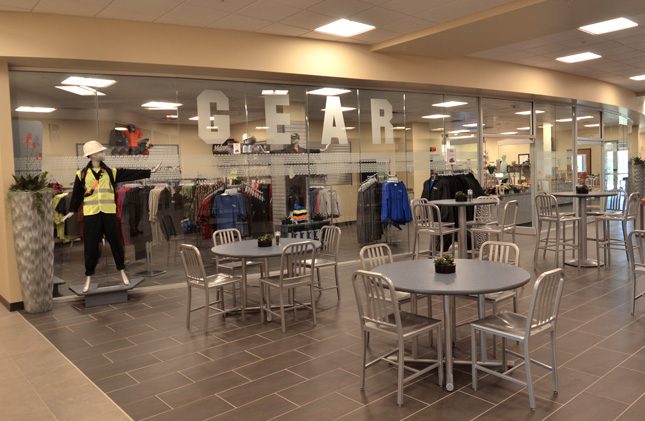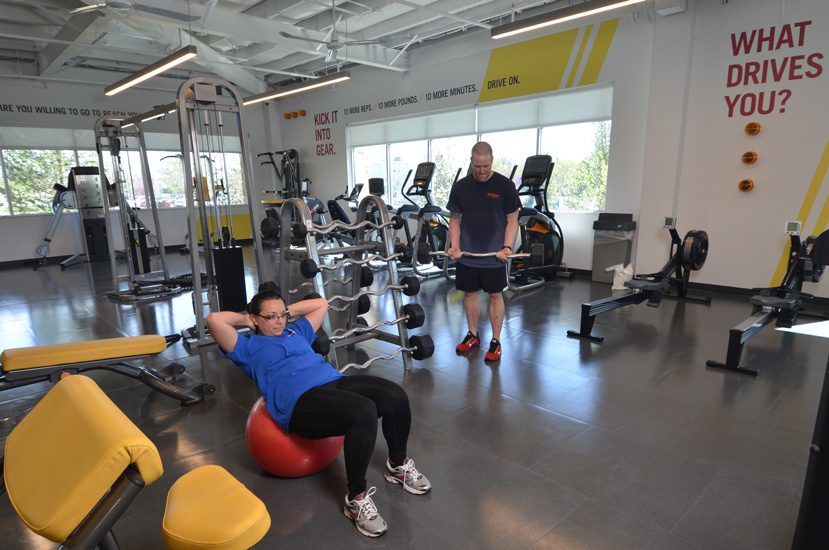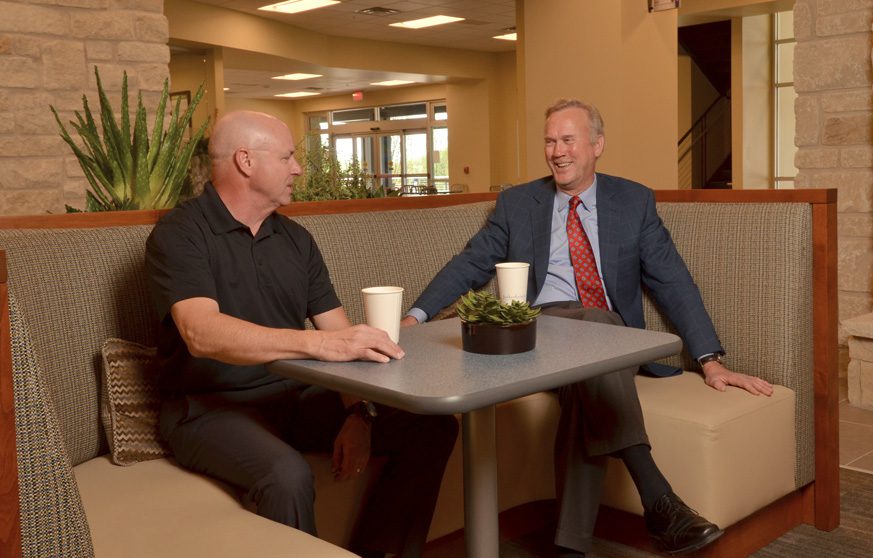
In 1989 a small trucking company relocated from Missouri to Tulsa to better serve its largest client. Today, more than 25 years later, Melton Truck Lines has grown from a fleet of 30 trucks and a handful of employees to more than 1,100 trucks and more than 1,200 employees.
Bob Peterson, president of Melton Truck Lines, says that with the growth the company had experienced over the last quarter-century, it was time to build a new headquarters for the trucking business.
“As our business has grown, from 30 trucks to now 1,100, it simply requires more space,” says Peterson. “We would have to push out a wall, remodel, gobble up the conference rooms and turn them into offices … we simply required more space for our employees.”

Peterson’s goal for the new facility was to provide space for all of its employees to feel comfortable. A large atrium greeting visitors to the facility would connect the administrative personnel to one another, as well as to the truck drivers. Peterson wanted to maintain the feel of Melton Truck Lines of a quarter-century ago, when only a few dozen worked for the company.
“We interviewed several architectural firms and explained to them the feel of what we wanted … we always try to keep a small company feel even as we’ve gotten larger,” he says. “For years at our old facility, there was one floor, one lounge, and you bumped into people all the time. We needed to build for the next decade or so, but because land is precious for a trucking company, we had to go up. How do you keep people connected on three floors and 80,000 square feet?”
The Tulsa-based architecture firm Kinslow, Keith & Todd was awarded the project. Lead Architect Jim Boulware says that Peterson’s idea of the open atrium is what drove the design of the three-story building. A large fireplace with an 80-foot chimney anchors the space. A 16-by-10-foot television monitor hangs above the fireplace and shows weather reports from various parts of the country. Commons facilities – including the atrium, a cafeteria, gym and offices – occupy the rest of the first floor.
Offices and conference rooms occupy the second and third floors. Peterson says that because of the atrium, employees can stand on one side of the second or third floor and see into offices across the atrium. More than 40 monitors are located in common areas and convey information about company news, senior drivers that are expected to be in Tulsa, employee anniversaries, birthdays, promotions and the cafeteria’s daily menus.
“It’s really unique that Bob wanted to offer a lot of amenities to employees, and that made this project special,” says Boulware. “A lot of services he’s providing, the big open space, that costs money, and a lot don’t see that return on investment; he saw value in that. It’s worked better than he even thought it was going to. Even though there’s an area dedicated to drivers, he’s been surprised at how often they gather in the atrium with the fireplace. That was his vision, and our challenge was trying to make that happen.”

“We were fortunate to assemble a talented and cohesive team,” says Rhonda Meshew, the primary in-house liaison for the project. “The firm of Kinslow, Keith & Todd brought impressive architectural talents to the table with Jim Boulware, Shannon Darnell and Nicole Watts. Fleming Building Company, under the direction of Ray Miller, was general contractor for the project. Additional team members were Russ Elliott and, Melton’s senior vice president of operations. Each party listened well to the open design concept ideas Bob envisioned and developed the outstanding facility we now occupy.”
Meshew adds that because connectivity to other buildings on the Melton campus is important, landscape architect Steven R. Williams and Kerry Blankenship were tasked with designing and installing the surrounding area outside of the new headquarters.

Employees take advantage of the company’s in-house gym.
Commitment To Wellness
“Truck drivers are hard to find,” says Peterson.
He adds that Melton was losing senior truck drivers to heart attacks and other health problems. It was at the funeral for one of those senior drivers that Peterson was moved to act by the driver’s family.
“Every dime spent [on insurance] is our own money,” he says. “If you become insulin dependent, you can’t drive a truck, and that’s bad on all counts. Do we do nothing, or do we start to encourage wellness? We said, ‘Let’s try to do something and encourage people.’”
It was with this in mind that 10 years ago Melton Truck Lines undertook a wellness initiative to encourage employees to maintain good health. The goals of Peterson and of Melton were realized in the new facility. A 4,000-square-foot gym is stocked with cardio machines and weight equipment accessible to all staff, and there is a women’s-only gym. A cafeteria is operated by California-based Guckenheimer and serves low-calorie, low-sodium meals to employees. An onsite clinic is accessible by employees and their families, and a nurse on staff can see patients during work hours.

A wellness coordinator oversees the initiatives and programs in place to keep employees healthy. Through the program, employees are incentivized to undergo yearly biometric screenings. Information is handed out to employees regarding age appropriate screenings like mammograms and colonoscopies. A Catoosa dentist visits the facility regularly to offer dental procedures and consultations to employees.
“After starting our wellness program in 2006, our medical costs continued to increase, peaking in 2012, but we’ve now had two years of declining per-person medical costs,” Peterson says. “I believe our efforts are finally starting to pay off. Our population’s health is improving. We’re getting more people to meet with a primary care provider. If they can’t get to their own doctor, busy parents can bring in their children and receive immediate primary care in our clinic, not spend a dime and hardly miss any work – a win for all of us.”

Photo by Dan Morgan and courtesy Melton Truck Lines.
Melton’s achievements in keeping its workforce healthy have been noticed. In 2014, Peterson received the Healthy Executive award at the Oklahoma Food Security Summit.
“We’ve tried hard in the building design to create a comfortable yet stimulating environment for our folks to work in,” he says. “A beautiful campus, healthy and delicious food in our cafeteria, open spaces for collaborative conversation and listening and a modern gym to work out in. Healthy employees are happier and more productive.”























